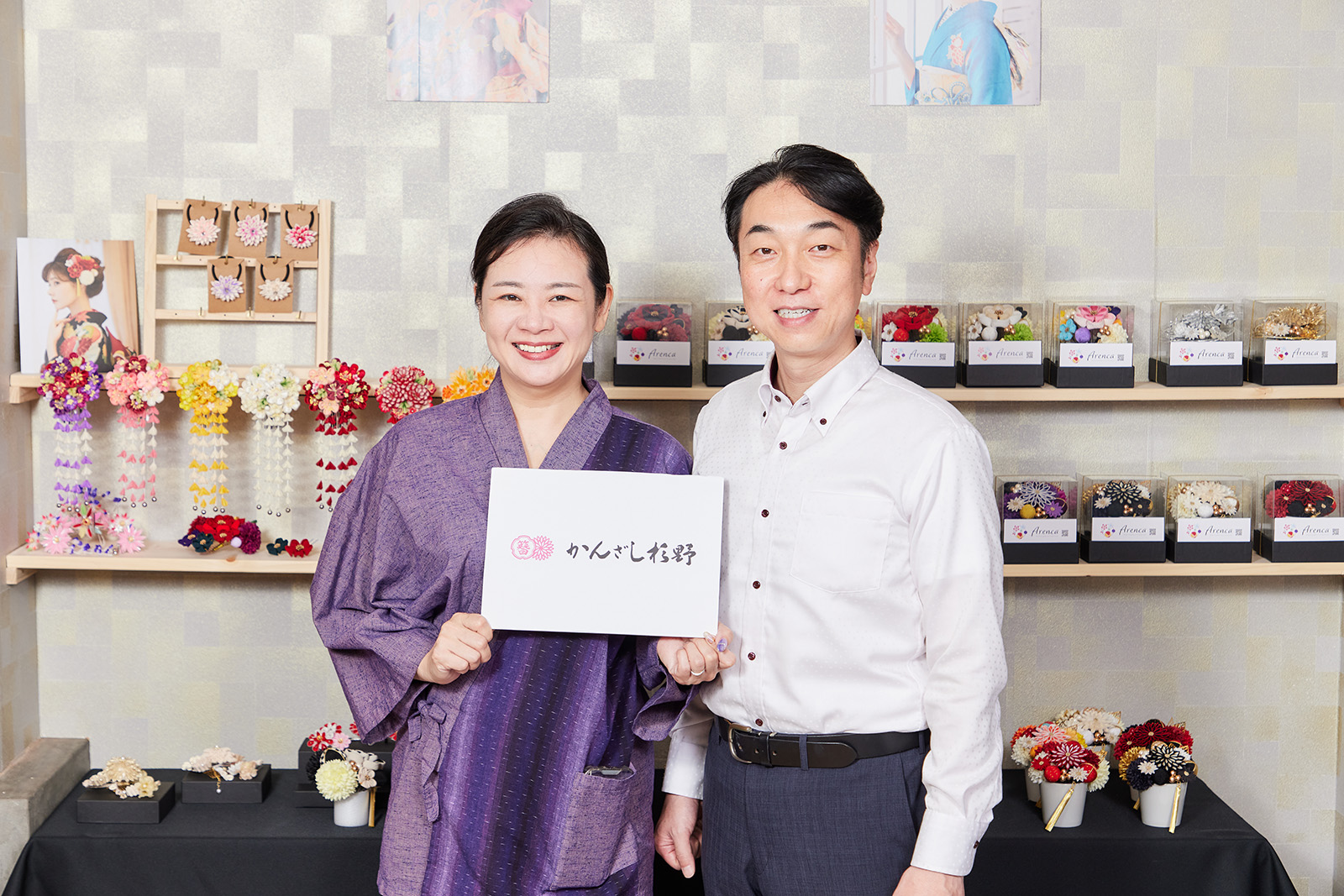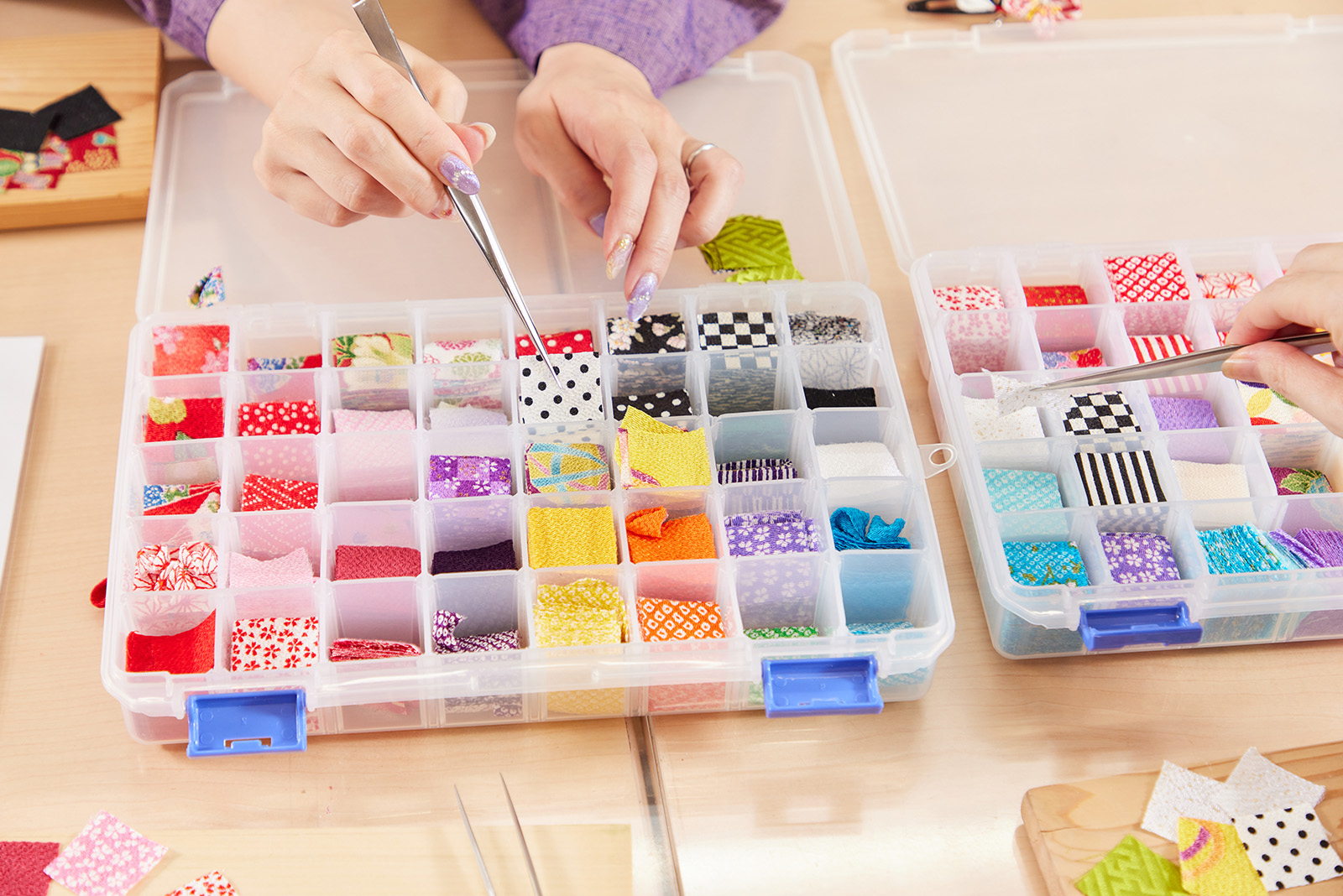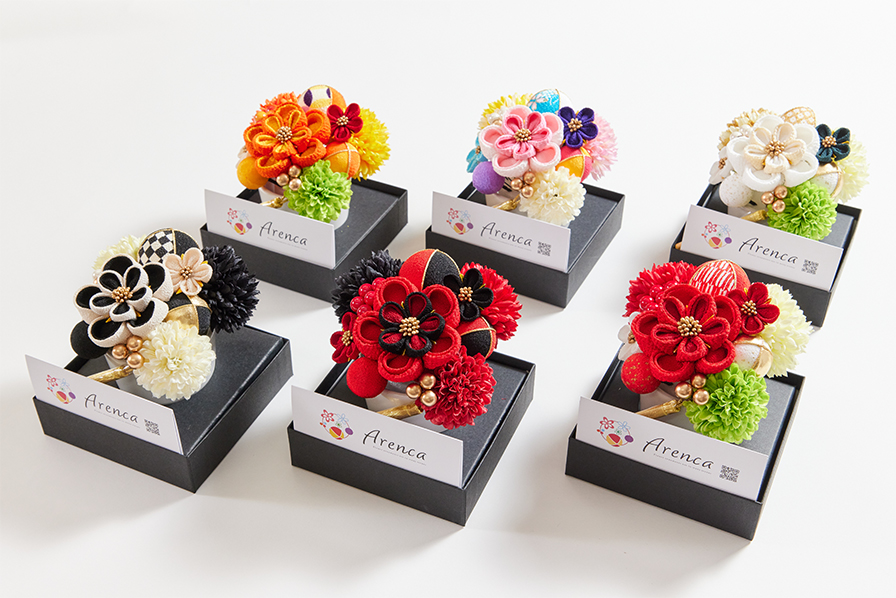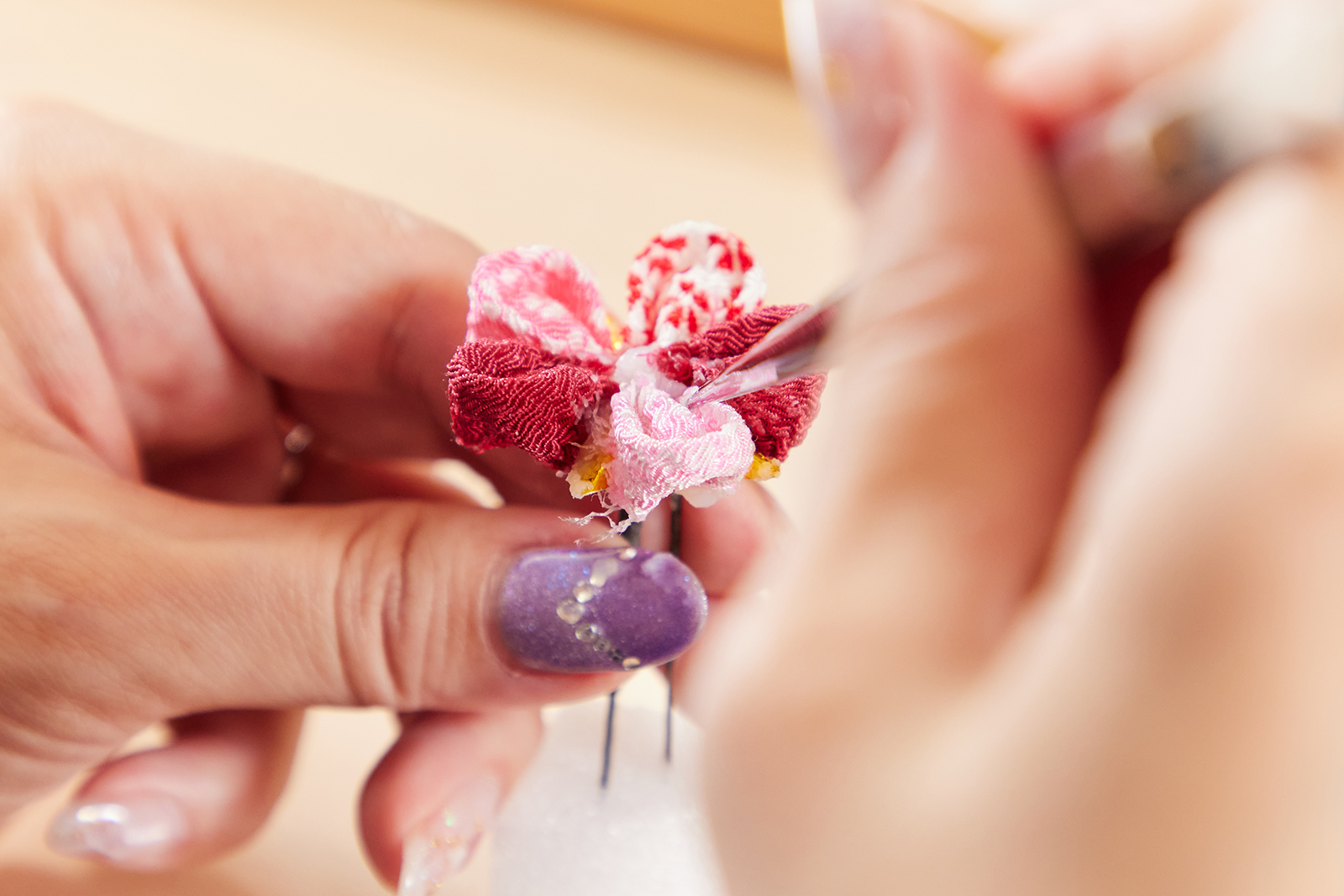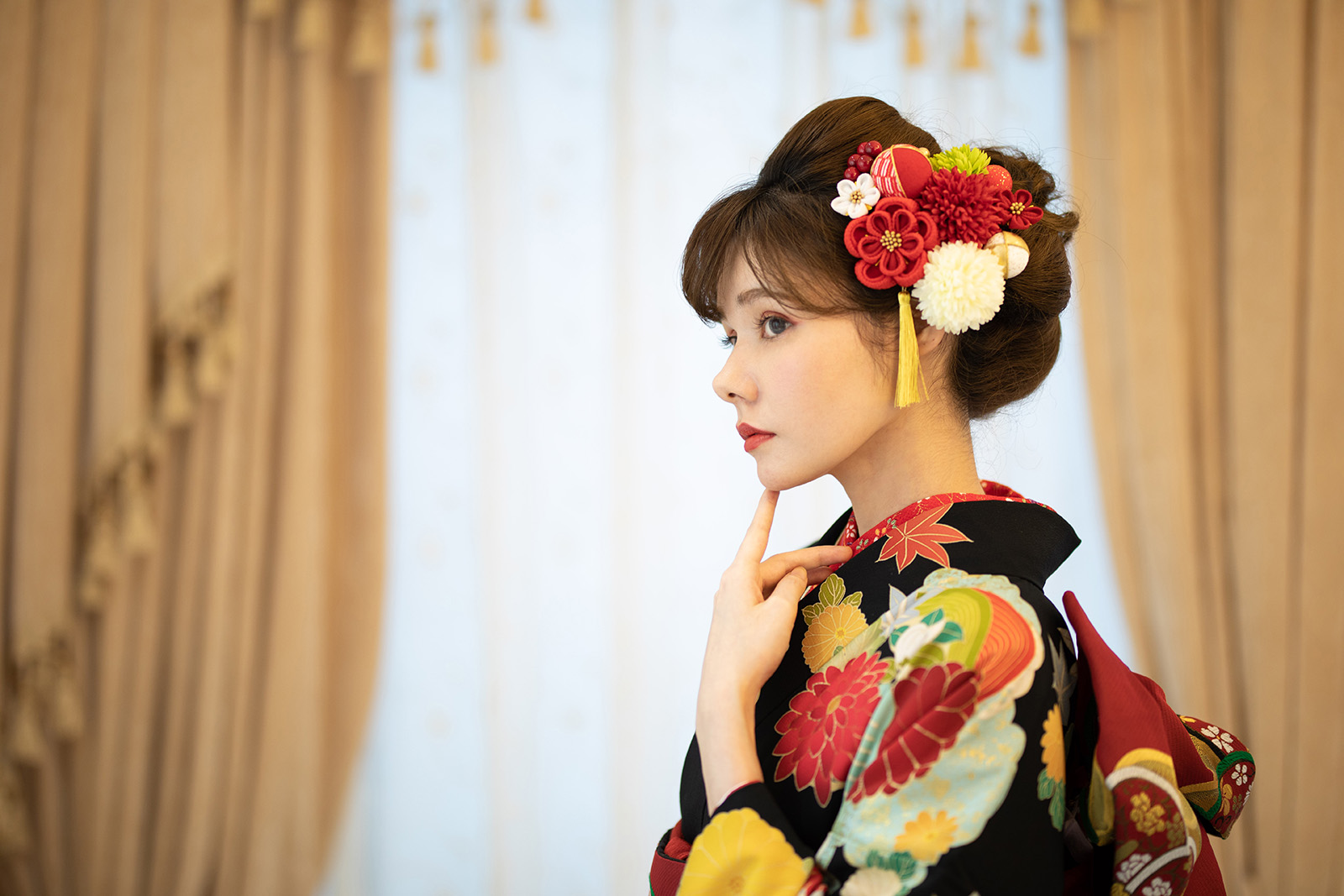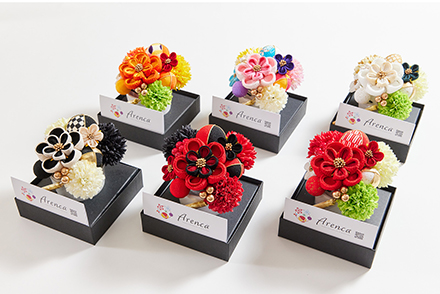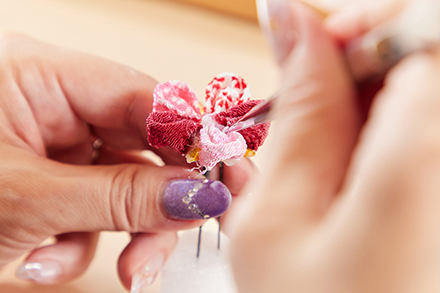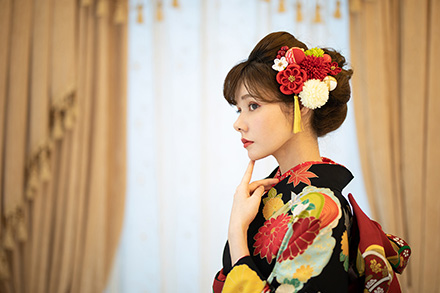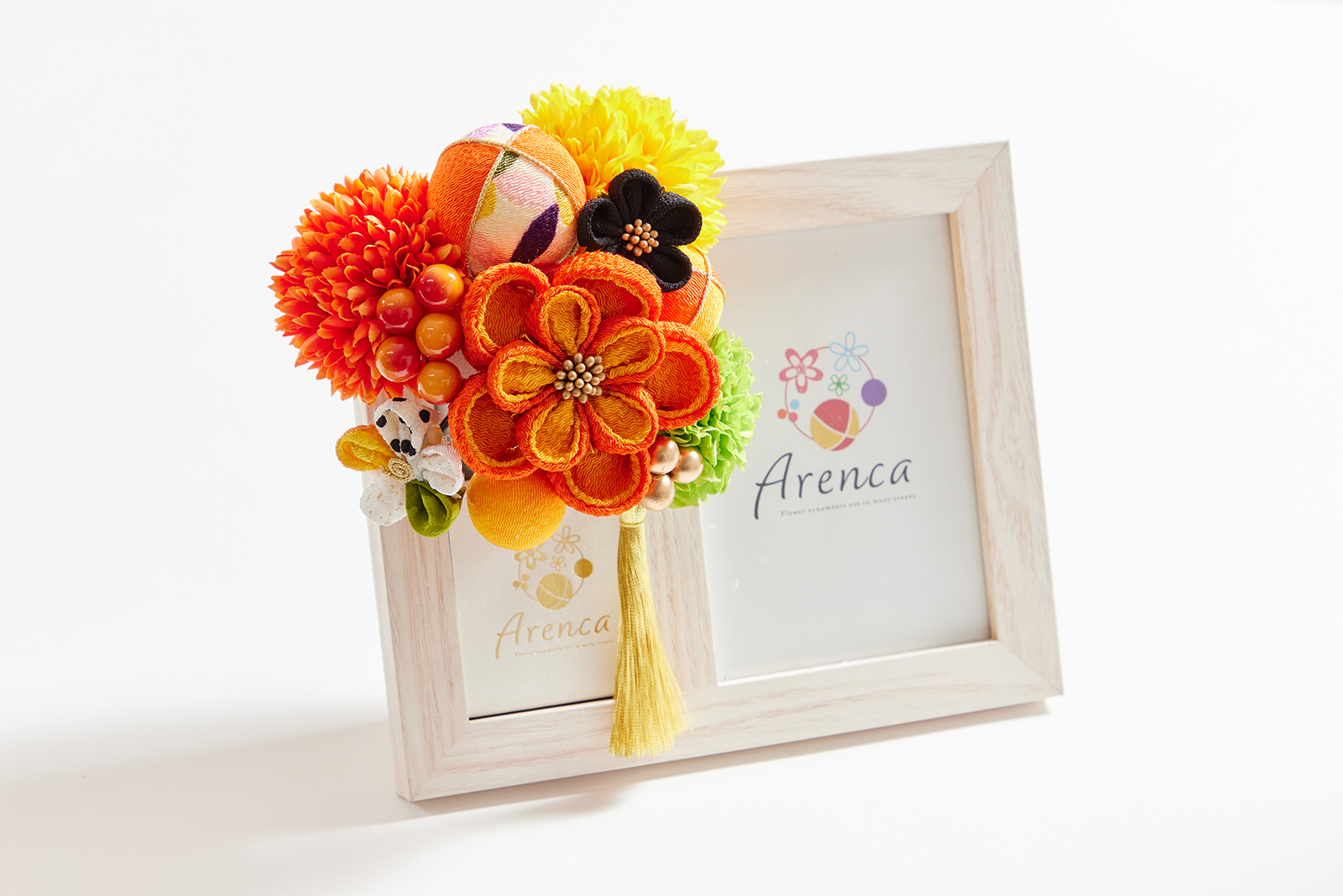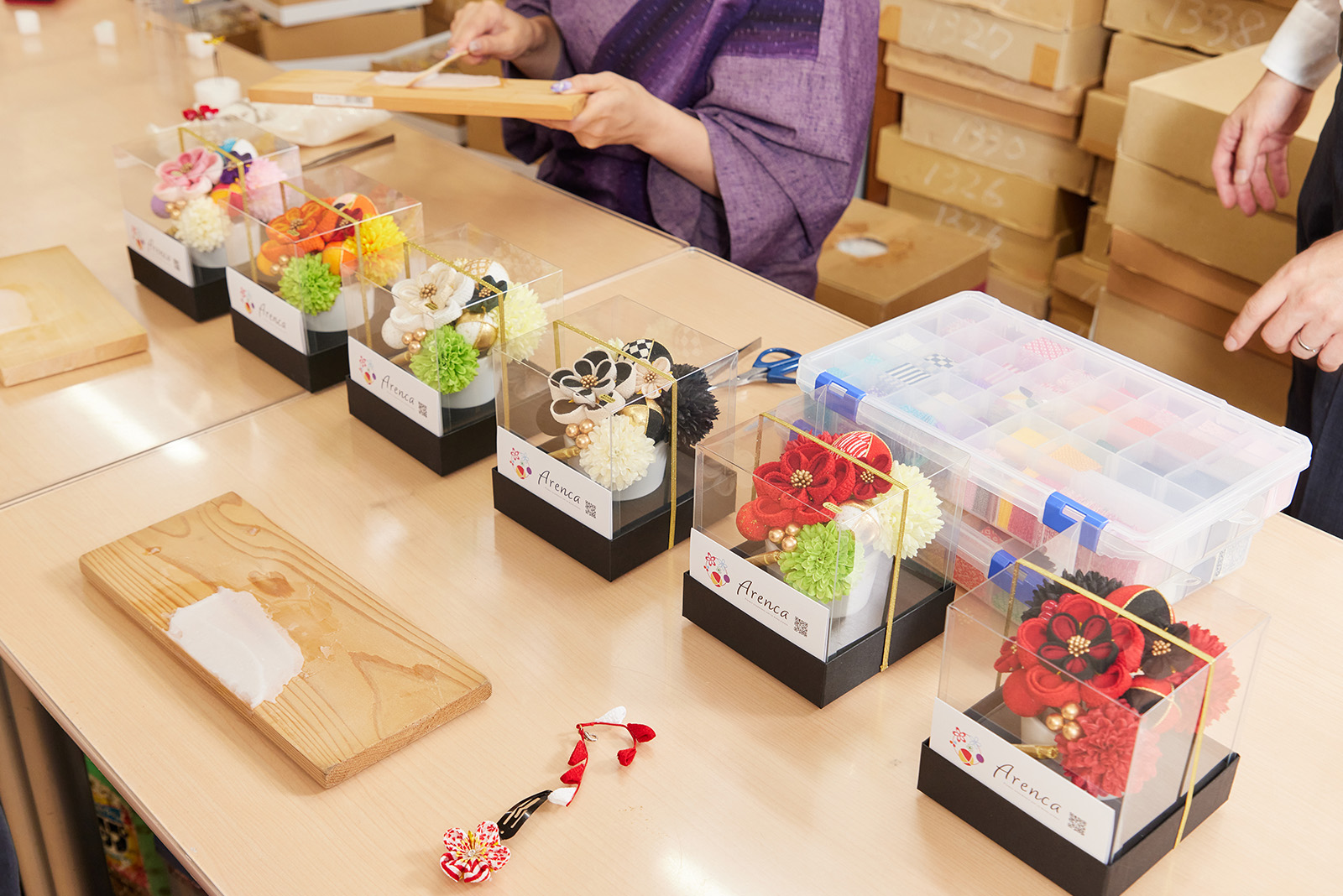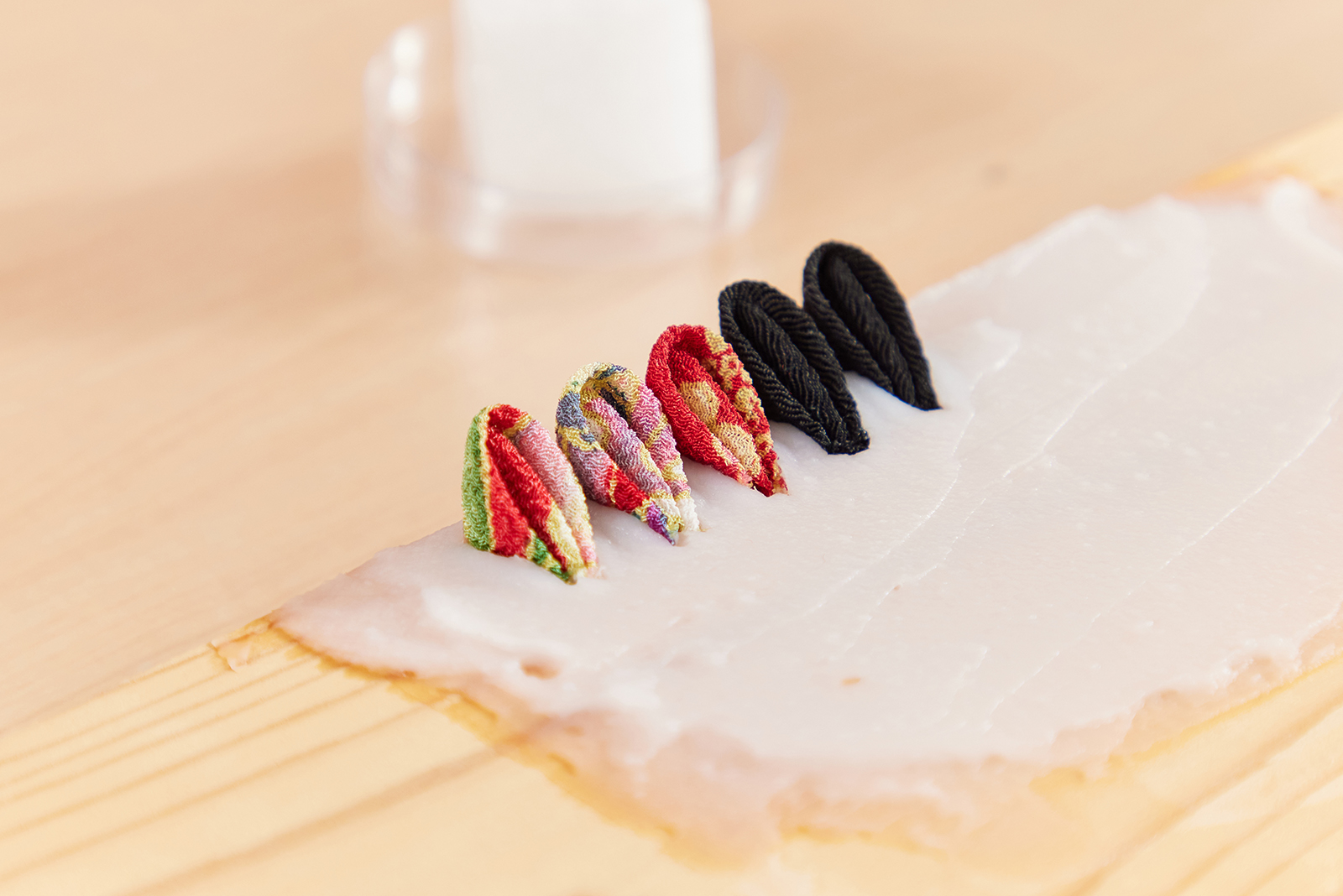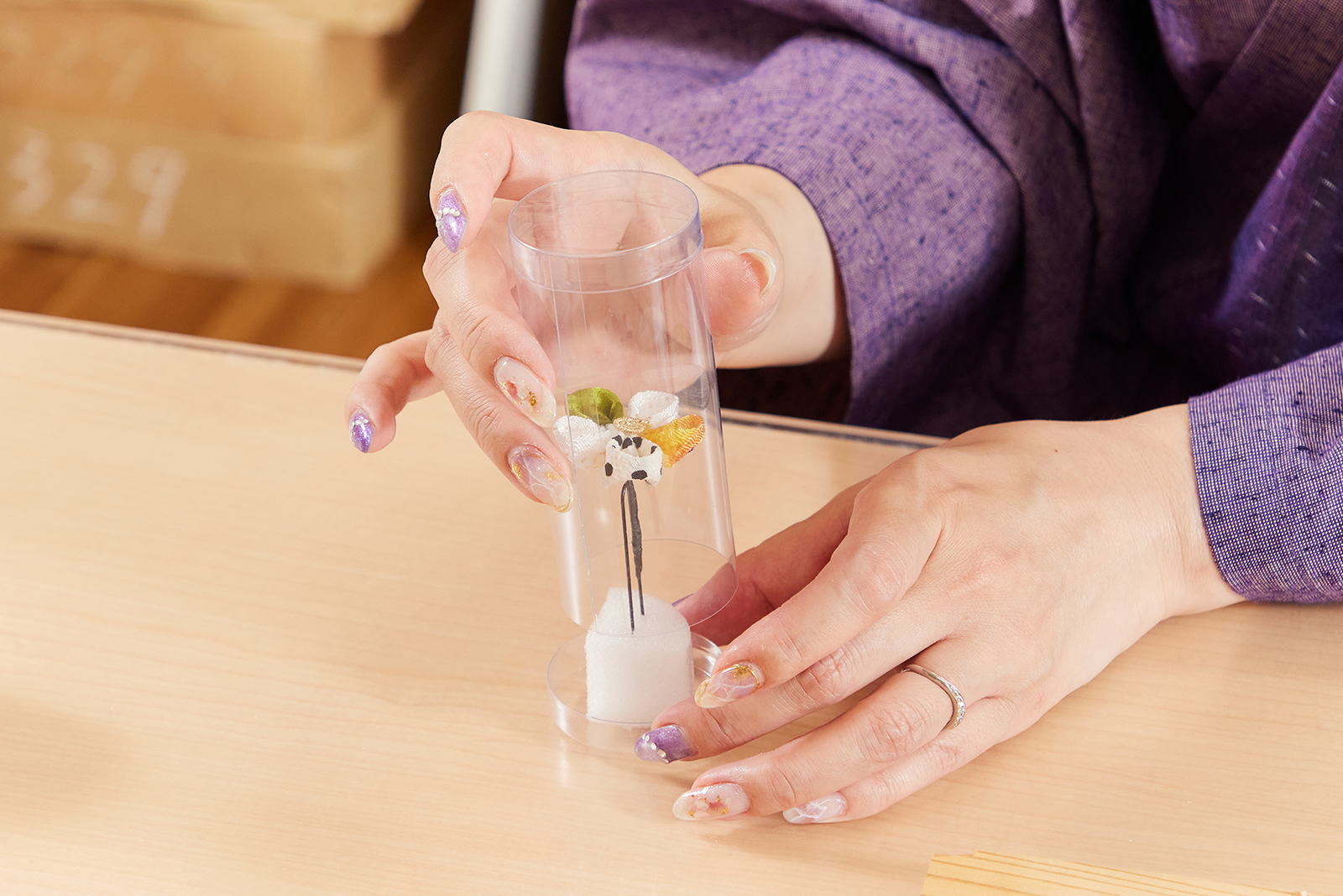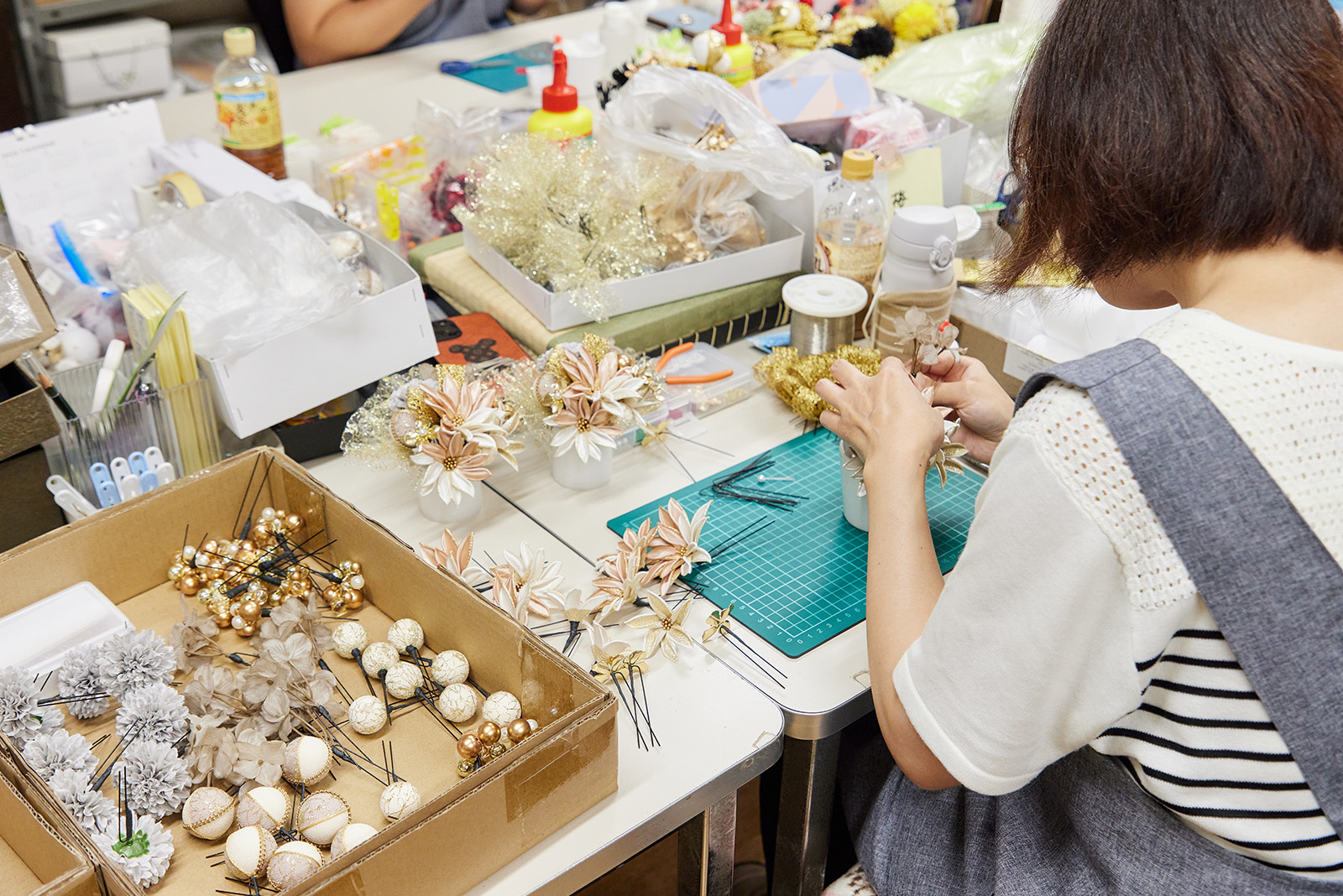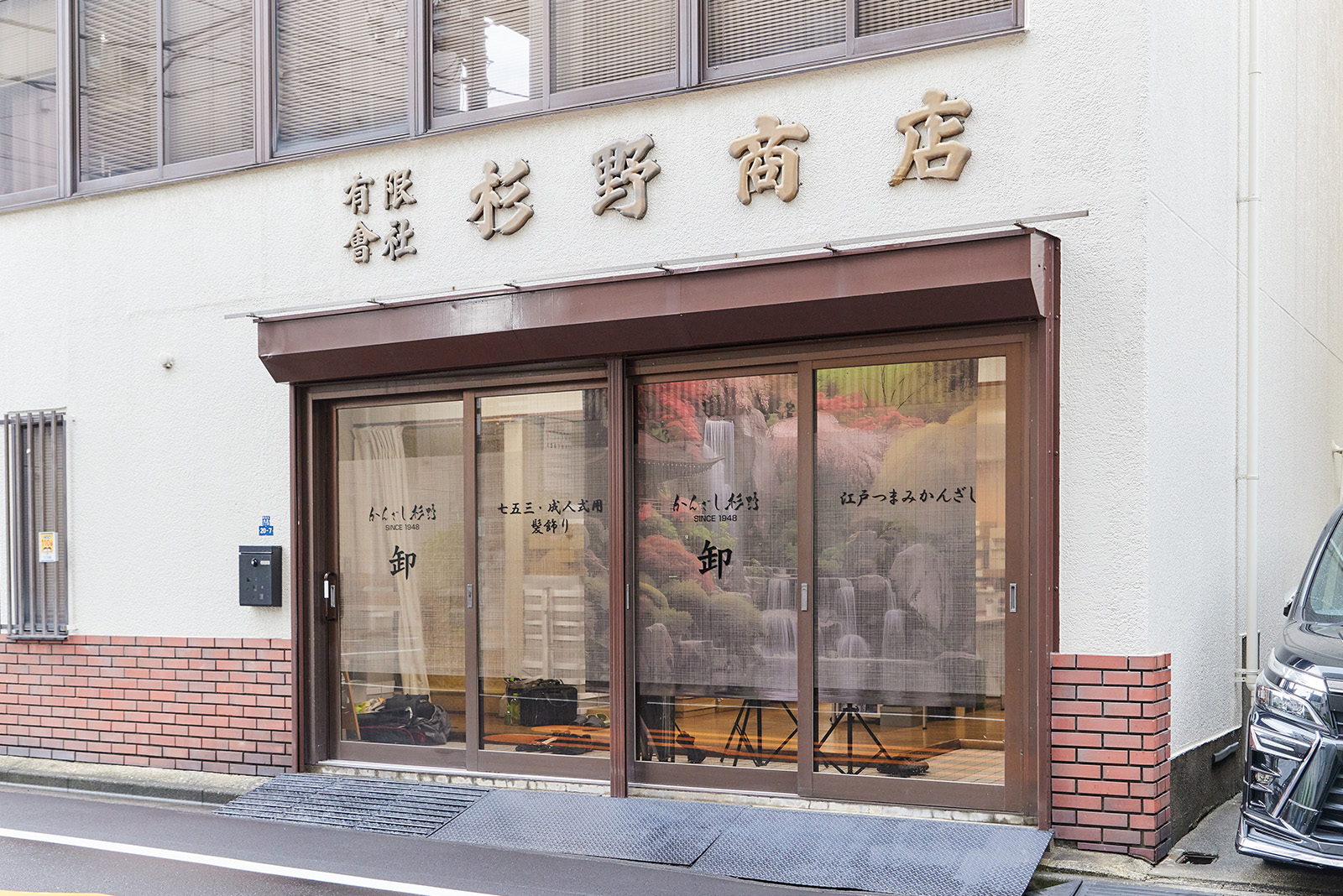A traditional craft born in the Edo era
Tsumami-Kanzashi hair ornaments add an accent of beauty complimenting the Japanese style clothing worn by girls and women on special days like the coming-of-age ceremony and the children rite of passage Shichi-Go-San. The story goes that these hair ornaments started in the Edo era, when kimonos were the norm, and people would cut off parts of the nagajuban (under-kimono) and pinch (tsumami) the unused fabric into shapes. In those days, there was no culture of throwing items away, and the Tsumami-Kanzashi hair ornament was born from not wanting beautiful fabric to go to waste.
Arenca, adding color and glamor to everyday life
Usually, once you use a kanzashi hair-ornament, there won't really be another chance to use it again because it is generally for special events. Arenca was born from the desire to enliven your daily life with décor via these gorgeous and beautiful kanzashi hair-ornaments crafted by the hands of artisans. In the Arenca presentation, Tsumami-Kanzashi hair ornaments are inserted into a sponge to achieve a flower-arrangement look. They can be used to decorate your interior space like a beautiful bouquet, or added to a special photo frame to enliven the memory of a photograph.
Fabric selection will inspire images that set your heart alight
The Kanzashi Sugino activity starts by taking a board the instructor has peeled off and selecting a color you like from among six types of Arenca. Next, select a pre-made Tsumami-Kanzashi hair ornament and add it to the Arenca.
At this point, the components have become your own original product. But from here on out is where you will be displaying your own personal style. You will select five pieces of fabric that will become the flower petals from among nearly 100 types of fabric, and craft an even more elaborate Tsumami-Kanzashi hair ornament to add to Arenca.
There are no restrictions on how you select your fabrics. Some people choose all the same color, some all different colors. Everyone has their own style. And there is also the fun of not knowing where patterned fabric is going to show up when the piece is complete.
The birth of a one-in-the-world Tsumami-Kanzashi hair ornament
After you select your fabrics, you will create your marutsumami petals, the foundation of tsumami crafting. While observing the instructor's example technique, fold the fabric carefully with tweezers, and line them up on the board. When the colorful flower petals are lined up on the board, thy look like a tiled roof. It is supposedly this appearance that call to mind "shingling a roof," and has resulted in calling the act of lining up marutsumami petals "shingling."
After you have crafted your five flower petals, apply starch paste glue to the Tsumami-Kanzashi hair ornament foundation and set your flowers atop. In the Edo era, because starch paste was made by crushing rice, products people put time and effort into making would supposedly wind up getting eaten by mice and insects. Thus, none of the Edo era Tsumami-Kanzashi hair ornaments have survived to today.
Place your five flower petals on the base. When the glue dried, they are completed. It takes 24 hours for the glue to be dried, so take them home in a special case and keep them in the case until then.
After the activity, if you post your item on social media, A Sagari ornament would be a thanks for posting.You can attach the sagari to your Arenca, so make sure to brag about your one-in-the-world item on social media.
Rediscovering the wonder of traditional crafts in this era of digitalization
With the popularization of the digital world, now is the perfect time to rediscover the excitement and joy of traditional crafts through the physical activity of creating with your own hands. You will have an even greater respect feel for the value of Tsumami-Kanzashi hair ornaments and experience a sense of love for what you have created yourself.
Japan has a high level of technique in the world of product creation. Kanzashi Sugino actively advertises the splendor of traditional Japanese crafts not only within Japan, but abroad as well. Take one of their special Arenca in your hands and let it enrich not just a single moment of your life, but your entire journey through it. This studio is brightened not only by the Arenca flowers, but also by the smiles of the participants.
SUGINO Co., Ltd. launched in 1948. Ever since, it has strived to popularize and raise awareness in the area of Mukoujima about hair ornaments, focusing mainly on kanzashi. Based in the concept of providing heartwarming and amazing activity experiences with kanzashi hair-ornaments, it holds workshops for local elementary school children, as well as promoting Japanese traditional crafts overseas as well. In 2018, it received a Tokyo Traditional Craft Industry Distinguished Craftspeople Appreciation Letter.
